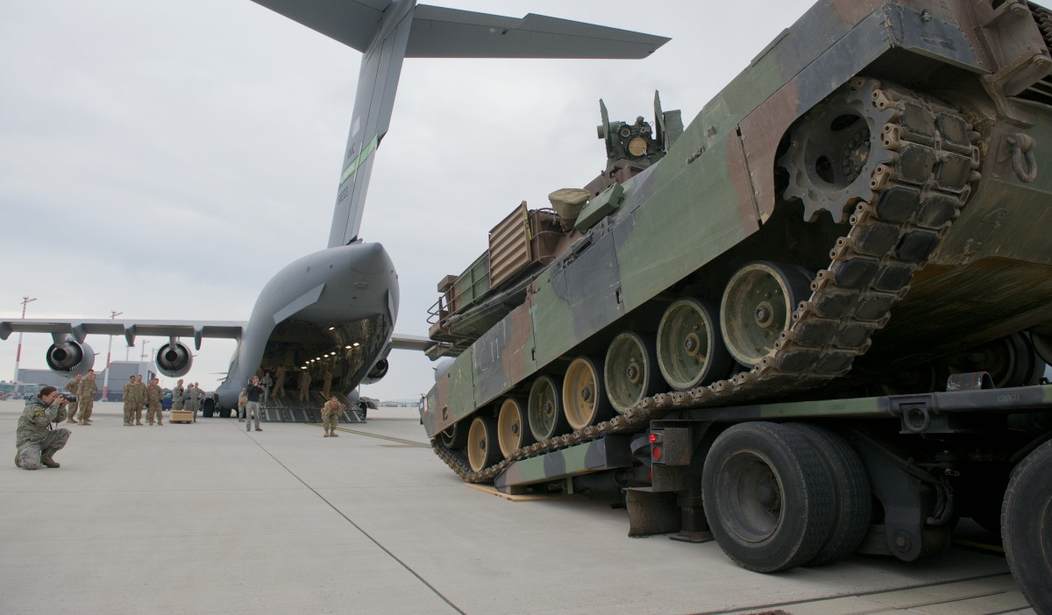It’s big news when Western tanks like the mighty American M1 Abrams, the German Leopard 2, and the British Challenger 2 will be sent to Ukraine to bolster that country’s defending armored forces.
But is this a case of too little, too late? It very well might be.
The numbers of heavily armored, high-firepower vehicles being made available to Kyiv are hardly impressive.
You can excuse the British for sending only 14, even though that’s only enough to arm a single tank company with zero replacements. The Brits were never able to find a significant export market for the Challenger 2, despite its impressive features and performance. So only around 450 were ever built, mostly for use by the British Army.
Berlin, despite having manufactured thousands of highly regarded Leopard 2s for domestic and export use, has also promised to deliver a mere company’s worth of tanks. Ditto Poland. They’ll send another company’s worth of Leopards they purchased to replace many of their Soviet-era tanks left over from when they were still a Soviet client state.
The Leopards will hopefully arrive this summer, complete with all the munitions, spares, training, etc. that turn a collection of men and gear into a real fighting force.
Poland is also sending its much-upgraded T-72s — called the PT-91 Twardy — in much greater numbers. Warsaw announced Kyiv would receive 60 of them, and in relatively short order.
Spain, Finland, and Norway have also announced they’re open to joining in, but have been coy about how many tanks or when.
Most curious is the United States. The Biden Administration announced a gift of 31 M1A2 Abrams, which sounds like a more generous donation than any other country — but they might not arrive for a year.
Biden chose not to deliver the most modern version of the M1 — the M1A3 — for legitimate concerns that the Russians would capture at least one and learn some of our most sensitive technologies and other secrets. But instead of sending older M1A1s out of our retired stocks (which are plentiful), Biden decided to send the in-between M1A2.
Those will have to be manufactured fresh, minus the super-hard depleted uranium armor, just for Ukraine. This decision seems stupid, so very stupid, to me.
Recommended: There’s Nothing Beyond Meat: Plant-Based ‘Meat’ Sales Take a Serious Pruning
To make a real difference — to turn the Ukraine Army into a genuine armored maneuver force capable of rousting the Russians — experts estimate the country would need 300-500 Western tanks. That’s enough to equip a reinforced armored division, but the qualitative edge over Russian numbers would likely prove decisive.
Decisive… ah, there’s the rub.
The decision to send heavy armor should have been made in March of last year, when it was clear that Ukraine had a lot more fight in it than most anyone expected.
Instead, Western indecision has allowed Moscow to determine the terms and pace of the war, and to define what counts as “escalation.”
But forget those lame cries of “Escalation!” by those who would be happy to see Ukraine wiped from the map. Remember, the first country to send modern, frontline main battle tanks (MBT) to Ukraine was Russia — and Putin ordered them in by the thousands. If the Kremlin doesn’t like MBTs in Ukraine, they could fix that situation in almost nothing flat by ordering their own back to Russia, where they belong.
When we send so few tanks and on such a long timeline, Moscow is given the opportunity to adjust and adapt. Worse, the longer this war goes on, the more negative consequences develop.
Kyiv had all but promised a winter counteroffensive on par with retaking Kherson and Kharkiv last autumn, just as soon as the ground froze solid enough to support offensive operations. But hemming and hawing in Western capitals prevented delivery of the weapons Kyiv lacks, and now it’s Moscow back on the offensive (albeit slowly and with terrible losses) in the Donbas region.
Also, the U.S. is already $4 billion behind in our military aid to Taiwan. Russia is the more immediate threat, but Communist China remains the more serious, long-term threat.
These are serious issues that might not have arisen had the decision-makers in Washington, Berlin, and London done their jobs and actually made timely decisions.
To be fair, the West has been slow and weak in responding to Moscow’s predations, going all the way back to Russia’s invasion of Georgia in 2008.
The question now is whether we finally act decisively enough to deter further predations, or whether Moscow takes Ukraine and later moves against Moldova, Finland, or even the Baltic States and Poland.
We might be running out of good answers.










Join the conversation as a VIP Member